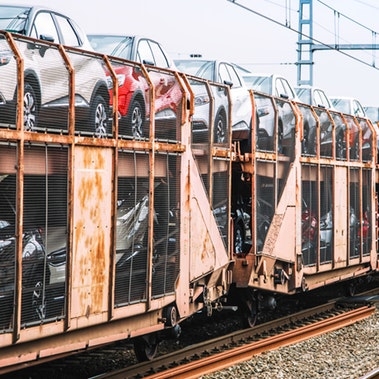There, sales staff have only a final vehicle configuration as a guide to the customer’s needs — and usually no idea about the customer’s budget, dislikes, and other details of the decision-making process.
The vast majority of customers do not like this system and would be inclined to complete the sale online: Less than one percent rate the automotive sales process as satisfactory. On the other side, automakers know the way they sell their products is expensive and inefficient. Many manufacturers have a picture of an improved, future set-up, including comprehensive online service, dealerships that play specialized roles in sales and marketing, and better connections between the two. But getting there is not straightforward, in particular because of automakers’ current reliance on brick and mortar dealer networks, which makes it hard to take radical action.
THE ONLINE PROCESS
Artificial intelligence is already used widely in online retail, where it helps to predict a customer’s preferences, make purchasing suggestions, and even initiate the right action at the right point in time. Automakers could benefit from greater use of such features to help guide customers to products they are likely to want, streamlining the customer journey and thereby boosting profitability while increasing stock turnover. It could even push customers to move toward models with lower carbon dioxide emissions.
With every additional step of the process moved online comes the potential for increased savings within the traditionally large portion of sales costs of an automaker. Perhaps more importantly, website behavior provides direct feedback on marketing investment, as it can indicate which of an automaker’s sales and marketing activities have had the most impact. Additional customer analytics can then be used to optimize marketing efforts by focusing on the buyer personas that are most likely to purchase.
DEALERSHIPS
As much of the sales process shifts online, dealerships can move away from their traditional, general role in the sales process and focus on specialized, customer-centric tasks. Some, in downtown locations, will play the role of showrooms or brand flagships. Others will function as delivery centers. An additional group will carry out aftersales services. Automakers will need to determine which of their existing dealerships and locations are best suited to each role.
Restructuring dealerships in this way will not, however, be easy. It is costly for automakers to set up their own retail networks, so they depend on independent dealership networks for sales. Being separate legal entities, automakers have limited control over these networks. If automakers fail to manage the dealerships properly, they could lose sales. Automakers should look for opportunities to push dealerships into particular roles — whether that be by altering sales margins when contracts are renewed or offering tailored incentives. Manufacturers will need to reconcile aggressive restructuring of the sales networks while maintaining good relations by offering dealerships attractive roles in the new delivery process.
CONNECTING THE PARTS
A customer walking into a dealership to buy a car has to essentially restart the process of choosing models and features, even if they have already completed an online builder. The dealer can often see the customer’s preferred configuration — but their visibility is limited to just the end result and not the decision-making process the customer went through to reach it. Without being able to see the customer’s starting budget, decisions, and myriad preferences, the dealer has only a limited understanding of the customer.
Automakers can narrow the gap between the online builder and dealerships sales staff by offering a configuration ID that can be sent to the dealership. Until now, however, there have been limits: Because dealerships and automakers are separate companies, they typically have separate IT systems, and the customer has to opt in to sending data to the dealer, which can be an impediment. This shared data does not necessarily reflect the various decisions made along the way but simply resembles the end-result, i.e. final vehicle configuration.
So, automakers should first create a system that runs the length of the whole purchasing journey and provides dealerships with access to information at all stages. The online builder, the dealer sales system, and the ordering system should all make up a single, smooth journey. Doing this requires integrating customer data so that it is consistent and accessible at all points in the sales and aftersales process — from a prospective customer’s initial sign-in to an online builder, all the way to aftersales services. The sales network should be incentivized to take customer’s online preferences into account, focusing on customer satisfaction and vehicle profitability as much as volumes. The sales system should also be standardized, so that it is the same for all dealers across markets. Otherwise, complexity and corresponding cost will quickly evaporate the desired cost and efficiency savings. While various customer data-driven use cases already exist, an effective implementation will rely on end-to-end transparency of customer choices along the entire journey. Online recommendations can only provide true value if the salesman in the dealership knows how the customer initially reacted to them.
CAR SALES OF THE FUTURE
Buying a car is much easier than it used to be, thanks to the wide range of online resources now available to the consumer — from manufacturers’ websites to community forums. For the average buyer, though, the experience is still far from pleasurable, not to mention expensive: Around 30 percent of automakers’ costs come from sales and marketing, making for one of the costliest sales systems across industries.
To fix the system, automakers need to upgrade their online services, restructure their relationships with dealerships, and better connect the online and offline experience. Some newer competitors are showing the way, with well-integrated interfaces that allow them to better understand their customers. Major automakers need to act fast so as not to be left behind.





